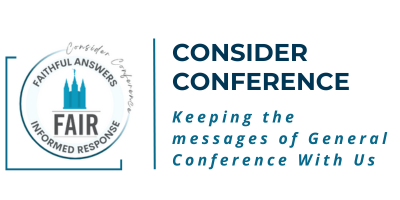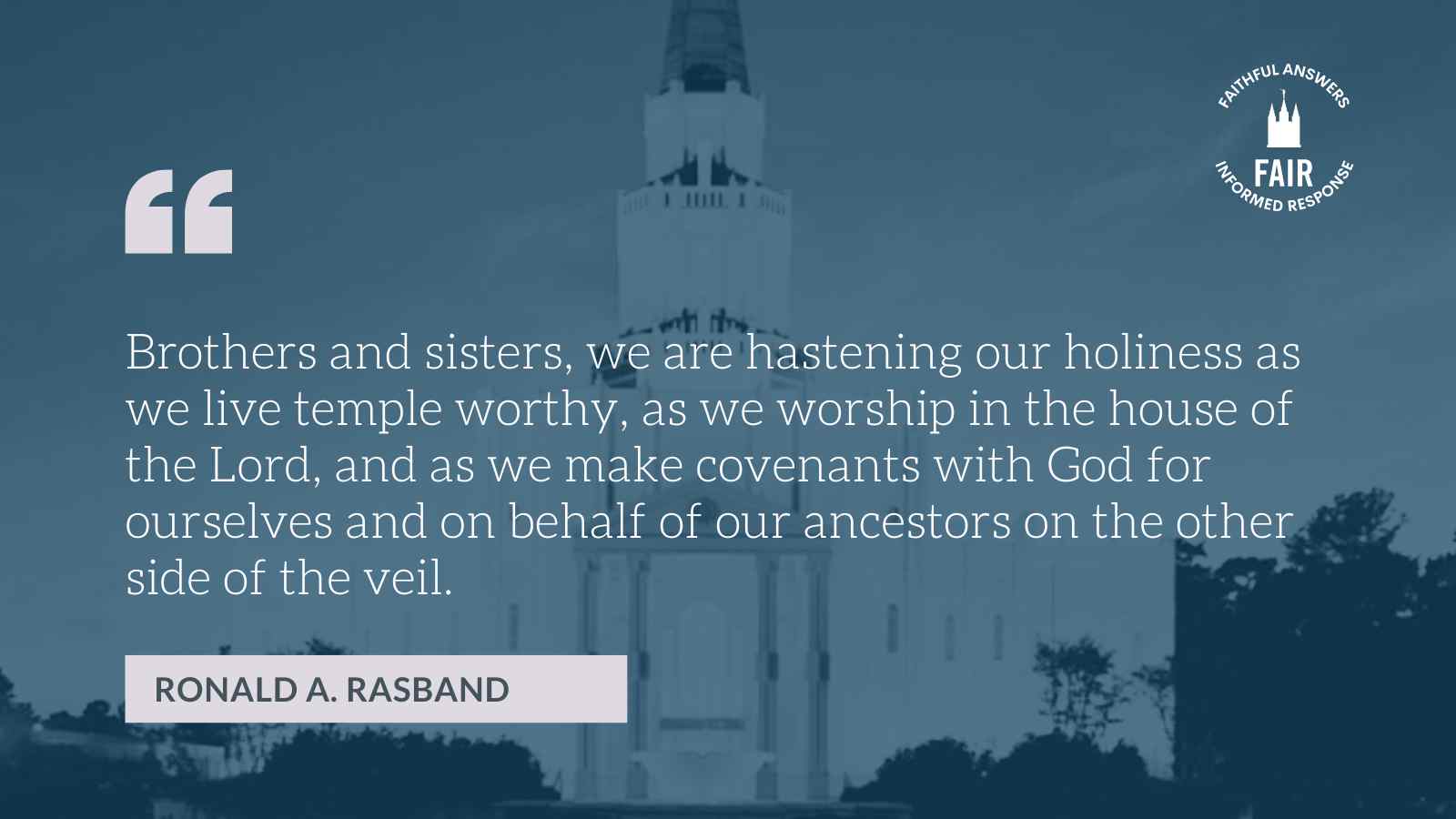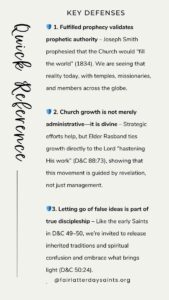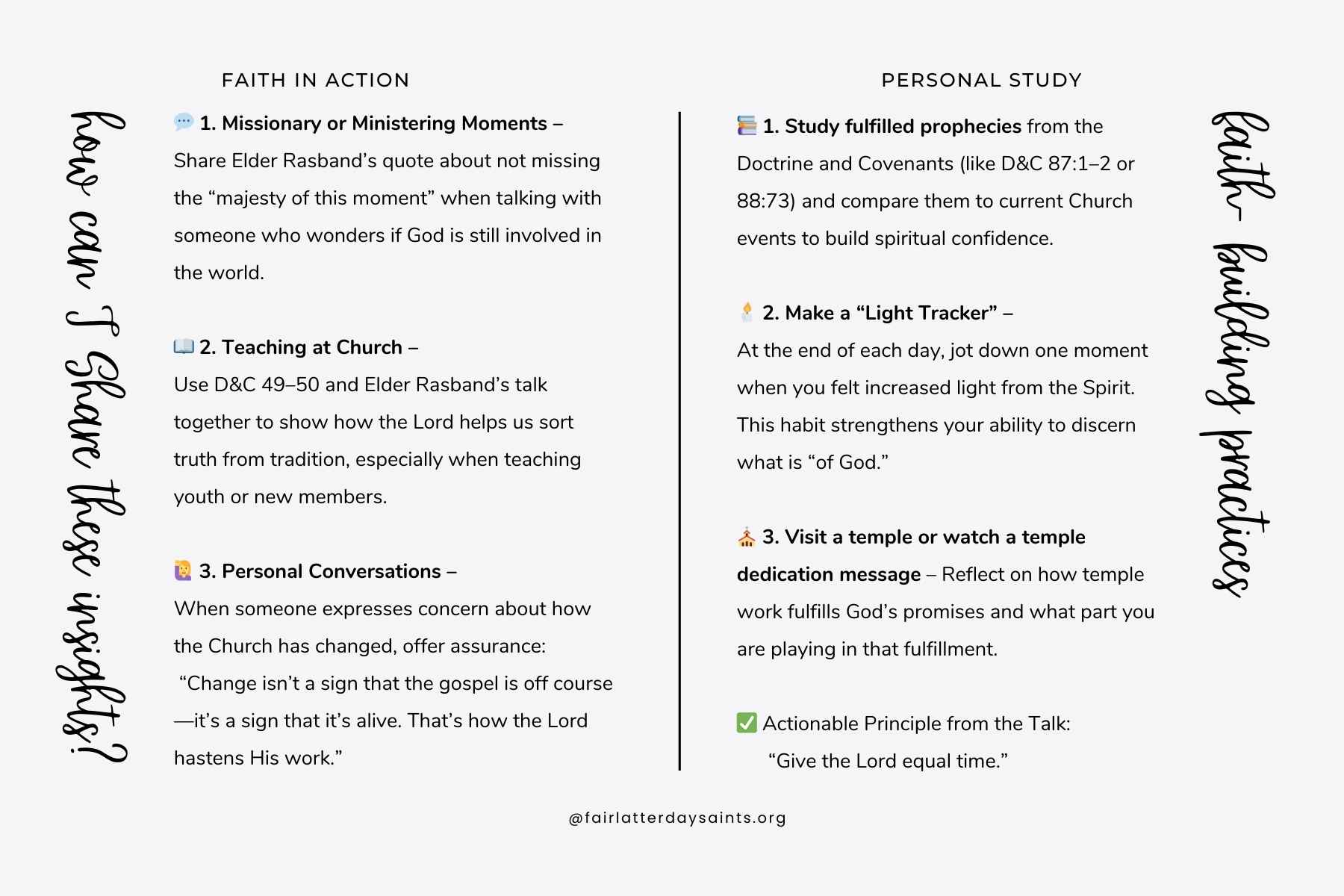
Recognizing Prophetic Fulfillment and Rejecting False Traditions
Have you ever paused to consider what spiritual miracles are unfolding right before our eyes—and whether we might be missing them?
In his General Conference message, Right Before Our Eyes, Elder Ronald A. Rasband invites us to recognize the majesty of this moment in the Restoration. The growth of the Church in temples, missionaries, and faithful disciples isn’t just impressive—it’s the literal fulfillment of prophecy. Yet alongside that divine acceleration, Elder Rasband warns of ongoing opposition, distractions, and “naysayers” who seek to obscure or diminish the Lord’s work.
As we study Doctrine and Covenants 49–50, we see a parallel challenge: early Saints struggled to let go of inherited false traditions and distinguish the light of true revelation from counterfeit spiritual excitement. In both the 1830s and today, the Savior lovingly calls us to grow in grace, embrace light, and let go of ideas that are not of God.
Elder Rasband’s message becomes a powerful modern companion to these revelations — testifying that the Restoration is not just something we believe in. It’s something we are watching unfold in real time.

Apologetic Issues: Fulfillment of Prophecy and Letting Go of False Ideas
Criticism: Church growth is just coincidental—it doesn’t prove divine origin. The Church’s global expansion is simply the result of organizational strategies or cultural momentum.
Response:
Elder Rasband powerfully counters this claim by showing how specific prophecies—like Joseph Smith’s declaration that the Church would “fill the world”—are being fulfilled right before our eyes. The unprecedented growth of temples, missionary work, and education was foretold in scripture (see D&C 88:73) and is now observable in tangible ways.
This isn’t random expansion; it is evidence of divine orchestration.
Common Fallacy: Post Hoc Ergo Propter Hoc
This Latin phrase means “after this, therefore because of this.” Critics wrongly assume that because Church growth follows logistical efforts (e.g., creating new missions), that those efforts are the only cause.
Correction: A faith-based lens recognizes both divine and human participation—God inspires the leaders and the members who carry out His work. Fulfillment of prophecy doesn’t exclude planning; it includes it as part of God’s hand.
Apologetic Application: Fulfillment of Prophecy in a Living Church
Core Doctrine: God continues to fulfill prophecy through living prophets and the ongoing Restoration of the gospel.
The doctrine of continuing revelation teaches that God has not ceased to speak. The Restoration was not a one-time event—it is an unfolding process. The Lord’s hand is evident in the Church’s worldwide growth. Elder Rasband reaffirms that we are witnessing “the majesty of this moment” as temples rise, missions expand, and millions respond to the Savior’s invitation.
 Defending Core Beliefs
Defending Core Beliefs
1⃣Prophecies in the Restoration are not symbolic platitudes—they are specific and testable. Joseph Smith declared in 1834 that the Church would fill the Americas and the world. At the time, this seemed implausible. But today, with over 367 temples and a presence in nearly every nation, we can see the literal fulfillment. Prophecy in this context offers verifiable evidence of divine involvement.
2⃣ The Church’s growth is not just smart logistics and marketing.
While organizational efforts matter, divine foresight and prophetic vision give the Church its spiritual momentum. Elder Rasband’s talk illustrates that growth is happening in harmony with prophecy—not just strategy. When we view numbers, temples, and conversions through the lens of prophecy, we see not just human effort, but God’s plan unfolding in real time.
Clarifying Misunderstandings & Strengthening Faith
When critics dismiss the Restoration as emotion-driven or human-engineered, this doctrine provides a faith-anchoring response:
 Fulfilled prophecy = divine fingerprints.
Fulfilled prophecy = divine fingerprints.
 Ongoing growth = evidence that the Church is guided by more than men.
Ongoing growth = evidence that the Church is guided by more than men.
 Prophetic vision = reassurance that God is not silent.
Prophetic vision = reassurance that God is not silent.
Practical Apologetic Use: When someone questions whether the Restoration is credible, point to specific fulfilled prophecies. For example, Joseph Smith’s 1834 claim about worldwide expansion wasn’t aspirational—it was prophetic. Encourage seekers to consider what kind of 24-year-old farm boy could predict global outcomes—unless he was guided by God.
Historical and Doctrinal Connections
In the early 1830s, converts to the restored Church in Ohio came with sincere hearts—but also with false spiritual ideas and traditions inherited from their diverse religious backgrounds. This influx of spiritual enthusiasm, described in Doctrine and Covenants 50 and historical records like the experience of Levi Hancock, led to confusion and counterfeit manifestations of the Spirit.
Joseph Smith was commanded to “set in order” the Church by receiving divine revelation that would distinguish true light from false spirits. Just as the Lord gave the Saints in Kirtland tools to discern truth in the midst of chaos, He continues to guide us today through living prophets.
 Doctrine and Covenants Connection:
Doctrine and Covenants Connection:
In both the early Restoration and today’s worldwide Church growth, the Lord invites us to let go of traditions that are not of Him and embrace the increasing light that comes through covenant living, temple worship, and prophetic guidance.
By drawing attention to the fulfilled prophecy of Church expansion, Elder Rasband builds on the same principles taught in D&C 49–50:
- Let go of false or incomplete traditions (like the Shakers did in D&C 49)
- Discern truth by its fruits and light (D&C 50:23–25)
- Follow the Good Shepherd, who patiently leads us from confusion into clarity (D&C 50:40–46)
Living Apologetics: How to Apply This Today
 How can we help others recognize the fulfillment of prophecy and let go of spiritual confusion or outdated traditions?
How can we help others recognize the fulfillment of prophecy and let go of spiritual confusion or outdated traditions?
1⃣ Connect Church growth to prophecy in casual conversations.
If someone comments on how many missionaries or temples there are today, respond with: “It’s actually a prophecy being fulfilled. Joseph Smith said the Church would fill the world—and now it is. Pretty incredible, right?”
Simple, natural comments can plant powerful apologetic seeds.
2⃣ Gently challenge false traditions with scriptural clarity.
When someone expresses confusion about modern revelation or resists change in Church practices, refer to D&C 50:24:
“That which is of God is light”—if a teaching brings peace, clarity, and Christlike focus, it’s from Him. False traditions might sound familiar, but they don’t always bring light.
Top Apologetic Facts
 Historical Context: In 1834, Joseph Smith prophesied in a 14×14 foot schoolhouse that the Church would fill the Americas and the world. That prophecy is unfolding today.
Historical Context: In 1834, Joseph Smith prophesied in a 14×14 foot schoolhouse that the Church would fill the Americas and the world. That prophecy is unfolding today.
 Doctrinal Insight: Doctrine and Covenants 50 was given to help early Saints distinguish true spiritual manifestations from false ones—a lesson still needed today in an age of confusion and counterfeits.
Doctrinal Insight: Doctrine and Covenants 50 was given to help early Saints distinguish true spiritual manifestations from false ones—a lesson still needed today in an age of confusion and counterfeits.
 Practical Application: With 367 temples announced, under construction, or operating, Church members can see tangible evidence of a global, living Restoration.
Practical Application: With 367 temples announced, under construction, or operating, Church members can see tangible evidence of a global, living Restoration.
Conclusion: Witnessing the Restoration in Real Time
Elder Rasband’s powerful testimony invites us to see the Restoration not as a past event, but as an active, unfolding reality—one we are meant to participate in. As we give the Lord “equal time,” we gain the spiritual clarity to discern what is true, what is light, and what is real.
We are not passive observers—we are eyewitnesses of prophecy. The question is: Are we paying attention?
As we study D&C 49–50, may we let go of outdated traditions and embrace the true doctrine that brings light. Like the early Saints in Kirtland and the missionaries in Lima, we too can shout “Hurrah for Israel!” and take our place in this majestic moment of the Restoration.
“We are hastening our holiness as we live temple worthy, as we worship in the house of the Lord, and as we make covenants with God.” —Elder Ronald A. Rasband
The Consider Conference series by FAIR offers an in-depth look at recent General Conference talks to help members of the Church of Jesus Christ of Latter-day Saints navigate common questions, misunderstandings, and criticisms. Each post provides doctrinal insights, historical context, and practical ways to apply gospel principles in everyday conversations. Through this series, we hope to equip readers with faith-promoting resources that encourage thoughtful reflection, respectful dialogue, and a stronger foundation in gospel truths, fostering both personal conviction and meaningful discussions with others.
The post Right Before Our Eyes appeared first on FAIR.
Continue reading at the original source →






